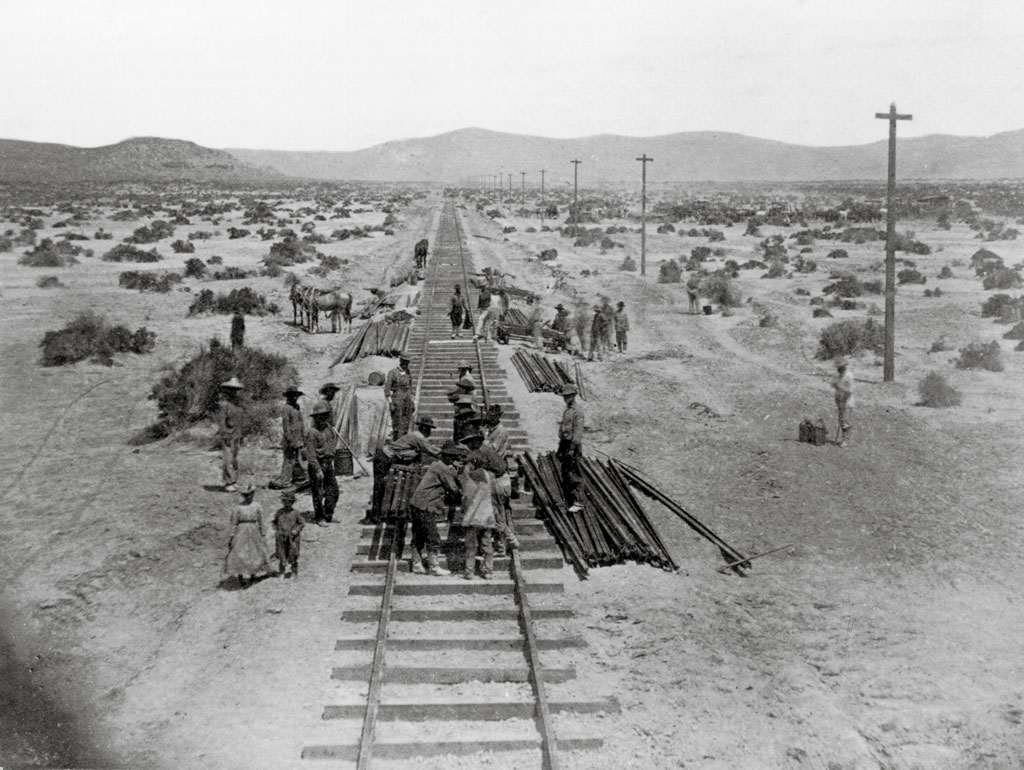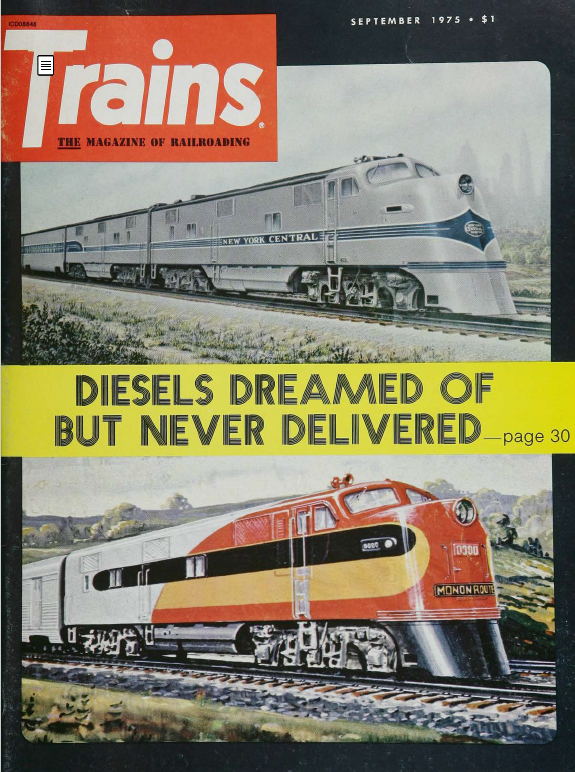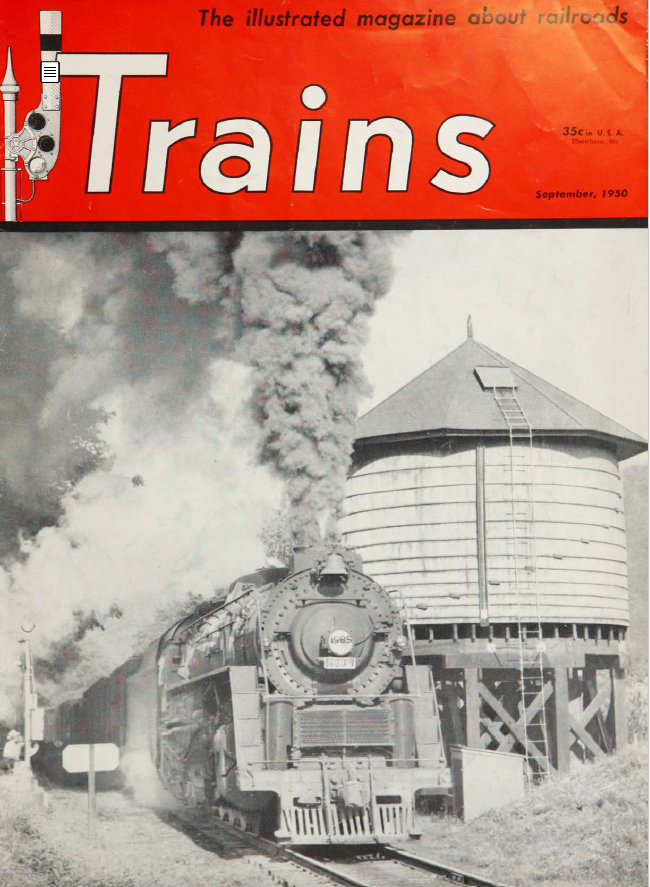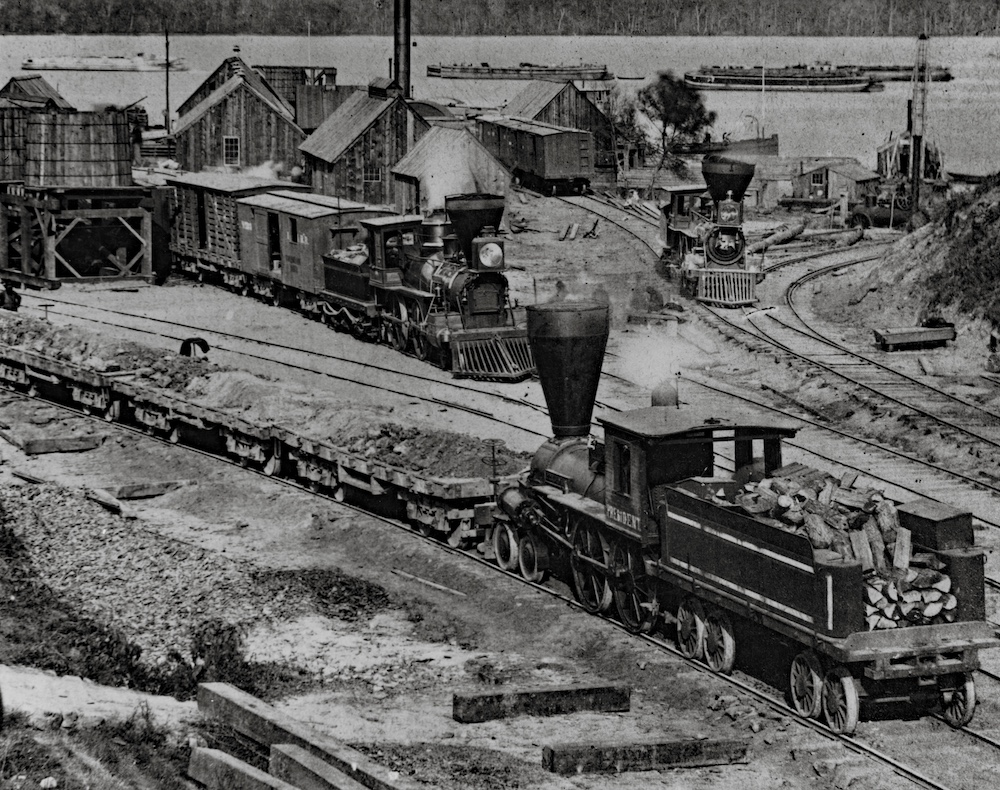Before 10 miles of track in one day
No one expected the Pacific Railroad to be built in a hurry. The first Pacific Railway Act of 1862 set a deadline of 14 years, which seems reasonable given the imposing task proposed. The Central Pacific commenced moving earth in January 1863. Track work began the following October, and 31 miles were complete 32 weeks later in June 1864.
The Union Pacific did not even get started until 1865, though it completed 305 miles to North Platte, Neb., by the end of 1866. By then, the CP had completed a total of 92 miles. Not until the third version of the Pacific Railway Act in July 1866 was the CP authorized to build eastward until it met the UP. This subtle modification of the law turned the project into a race. With sections of granted land and federal construction bonds apportioned by miles of track built, both companies were now fully motivated to build as rapidly as possible. As the first significant market east of western Nevada, the Salt Lake Valley became the CP’s goal.
The Transcontinental Railroad race really begins
The real race began in 1868. By then, after five years of construction, the CP had built only 132 miles. While this got rails to the Nevada state line, a gap split the railroad east of Donner Summit, where winter snows had halted work. That same winter, the UP was operating to Cheyenne, Wyo., 515 miles from Omaha.
The rugged nature of the Sierra Nevada hampered the CP’s construction. But this handicap related primarily to grading. Actual track building never began until sections of roadbed were fully prepared. And when it came to building track, the CP seems by subsequent standards to have moved at a leisurely pace. Track building (as opposed to grading) had consumed only 95 weeks of the five years already spent in construction. In those 95 weeks, the company had built track at an average of barely 11/2 miles per week. By comparison, the UP averaged about 8 miles of track per week during 1866 and 1867.
Laying track on the Central Pacific
The CP was limited both by technology and its small crew. A typical day’s work began with perhaps a few dozen men accompanying a fully loaded tracklaying car to the end of rails. This load consisted of rails, topped with ties, spikes, and splicing hardware. Figuring 16 of the 24-foot rails the CP then used, this load was enough to build 192 feet of track.
At the end of track, the ties were unloaded and lined up against a cord stretched exactly 4 feet to one side of the road’s centerline. Joint ties were set first, measured off with a rail-length stick. For their first 70 miles, the CP rails were spliced with “chairs,” which had to be supported by a tie. Rails were laid “square,” with the joints on both sides of the track supported by the same tie. Because the half-inch thick chairs wrapped under the rails recesses had to be adzed in the joint tie to accommodate the chairs. After the joint ties were in place, the intervening ties were set.
With the ties in place, rail laying began. Before each rail was rolled off the car, a chair was installed on its leading end. Often enough, the chairs did not fit the rails perfectly and had to be hammered onto the rails. With its chair in place, each rail would be rolled off the car and set onto the ties, the chair at the leading end setting into the adzed recess prepared on the joint tie. The tail end of the rail was then shoved (or driven) into the last-laid rail’s joint chair.
Once two adjacent rails were down, they were gauged and spiked to the ties. Spikes passed through holes punched in the chairs engaging notches broken into the rail base and tying the chair and rail to the joint tie. This provided resistance against rail creep and also held the chair and rail in place as the next rail was driven home.
Once the rails were anchored, the tracklaying car was rolled ahead and the next two rails were unloaded. Aside from setting ties, most of the activity was confined to a single rail-length panel of track. There just was no space for more than a handful of men. Aside from all the complications of using chair joints, the primary limitation to speed with this method was the impossibility of employing very many men on the job.
Understandably, this whole operation advanced slowly. Curves, of which the CP had many, only made the work slower. Because the inside rail on curves advances over the outside rail, the inside rails had to be cut short to keep the joints even on the joint ties. Also on curves, rails were pre-bent. It seems hardly a surprise that for the first 70 miles, using 24-foot rails and chair joints, CP tracklayers averaged barely a mile laid in a six-day week.
In 1866, the company finally abandoned chairs and adopted “fish” joints. Bolted through the rail web, fish splice bars made adzing recesses for chairs a thing of the past. At the same time the company adopted 28-foot rails and began ordering a portion of them 6 inches shorter than standard. From then on, once the inside rail gained 3 inches over the outside rail, they merely installed a pre-cut short rail. These changes nearly doubled the rate of production, but it was still less than a fourth what the UP was doing.
Laying track on the Union Pacific
Given their slow progress, it seemed unlikely that the CP could reach Salt Lake before meeting the UP, and company Vice President Collis P. Huntington was having fits over every delay. In January 1868, he wrote from New York that UP’s Jack Casement had added a fourth and a fifth mile in a single day. (This had happened the previous August.) No one on the CP could imagine how he had done it. Huntington suggested sending a spy the next summer when the UP resumed tracklaying. But the mystery was unexpectedly solved in March when a former UP tracklayer walked onto the CP. He had worked for Casement the previous season and was only too happy to show Casement’s method to CP contractor Charles Crocker in exchange for a job.
An early assembly line for the Transcontinental Railroad
Casement achieved speed in tracklaying by involving more men, divided into specialized teams. While the traditional method involved a few men pitching in on every task in the limited area in front of the tracklaying car, Casement stretched the work space as long as possible. Ties were distributed from wagons well ahead of the rail laying, and the tracklaying car was rolled ahead on loose rails, allowing splicing and spiking to be done behind the car. Tie setters only set ties. Rail layers only laid rails. Splicers spliced and spikers spiked. Everyone gained proficiency.
Trained to Casement’s method by the former UP tracklayer, the CP closed that 6-mile gap at Donner Summit in a single week once the snow was off the grade in June 1868. From July until the railroad was finished, they rolled ahead at an average rate of 11.4 miles per week. Over that time, the CP covered 552 miles — even more than the UP’s 535 miles for roughly the same period.
Building the Transcontinental Railroad, building materials in demand
Once the CP crews caught on to the new technique, the primary limitation to progress was the delivery of material. Ideally, there was at least one supply train a day. It was unloaded behind the camp cars, with rail, ties, spikes, hardware, as well as food and other supplies left in piles adjacent to the track. The departing supply train pulled the camp cars back clear of the piles, leaving the supply piles accessible to the tracklaying cars and wagons.
All those trains on a single-track railroad created logjams. Derailments were common. On July 31, a supply train failed to reach the end of track. However, it and the next regular train arrived the following morning.
With extra supplies at their disposal, the crews laid 4 miles and 180 feet, almost matching Casement’s record. The same thing happened just two weeks later, and on Aug. 19, at a location some 15 miles east of Lovelock, Nev., the crews “putting in for glory” laid 6 miles and 800 feet of track in 16 hours. This was a record, and Crocker was understandably proud. He boasted: “We have tracklaying reduced now to one of the exact sciences and can beat the world at it.”
But they were not beating the world just yet. Casement’s crews were also working fast. On Aug. 17, they built more than 4 miles and on Oct. 26 they nailed down 7 3/4 miles of rail, working from 4 a.m. until midnight. These feats, reported in newspapers nationwide, inspired considerable rivalry, and Crocker was challenged to beat the UP’s record. Nevertheless, lengthening supply lines and winter’s chill delayed progress.
Want to find out more about the Transcontinental Railroad?
Facts, figures, history, and more are available from our special Journey to Promontory magazine, available at our partner shop, the Kalmbach Hobby Store.














